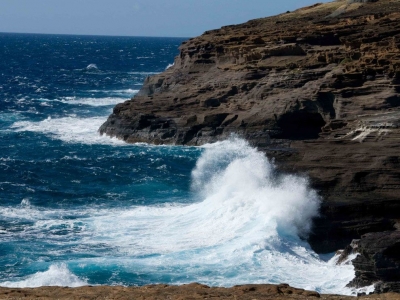
|
When waves, tidal waves in particular, hit land, the force of water has the power to break and crush rocks and to erode the soil. But they also bring in seashells, seaweed, other organic matter and debris from the sea, which all gets mixed and deposited among the crushed rocks to shape the coastline. Coasts are formed over hundreds of years and can be quite changeable, changing with time as tidal waves constantly crush, erode, wash away, bring in and deposit materials. |
The coast, also known as the coastline or seashore, is defined as the area where land meets the ocean, or as a line that forms the boundary between the land and the ocean or a lake.
Geologists classify coasts on the basis of tidal range into macrotidal coasts with a tidal range greater than 4 meters (13 feet); mesotidal coasts with a tidal range of 2 to 4 meters (7 to 13 feet); and microtidal coasts with a tidal range of less than 2 meters (7 feet). The distinction between macrotidal and mesotidal coasts is more important. Macrotidal coasts lack barrier islands and lagoons, and are characterized by funnel-shaped estuaries containing sand ridges aligned with tidal currents. Wave action is much more important for determining bedforms of sediments deposited along mesotidal and microtidal coasts than in macrotidal coasts
Waves erode coastline as they break on shore releasing their energy; the larger the wave the more energy it releases and the more sediment it moves. Coastlines with longer shores have more room for the waves to disperse their energy, while coasts with cliffs and short shore faces give little room for the wave energy to be dispersed. In these areas, the wave energy breaking against the cliffs is higher, and air and water are compressed into cracks in the rock, forcing the rock apart, breaking it down. Sediment deposited by waves comes from eroded cliff faces and is moved along the coastline by the waves. This forms an abrasion or cliffed coast.
Credit: Wikipedia
Picture Credit : Google




